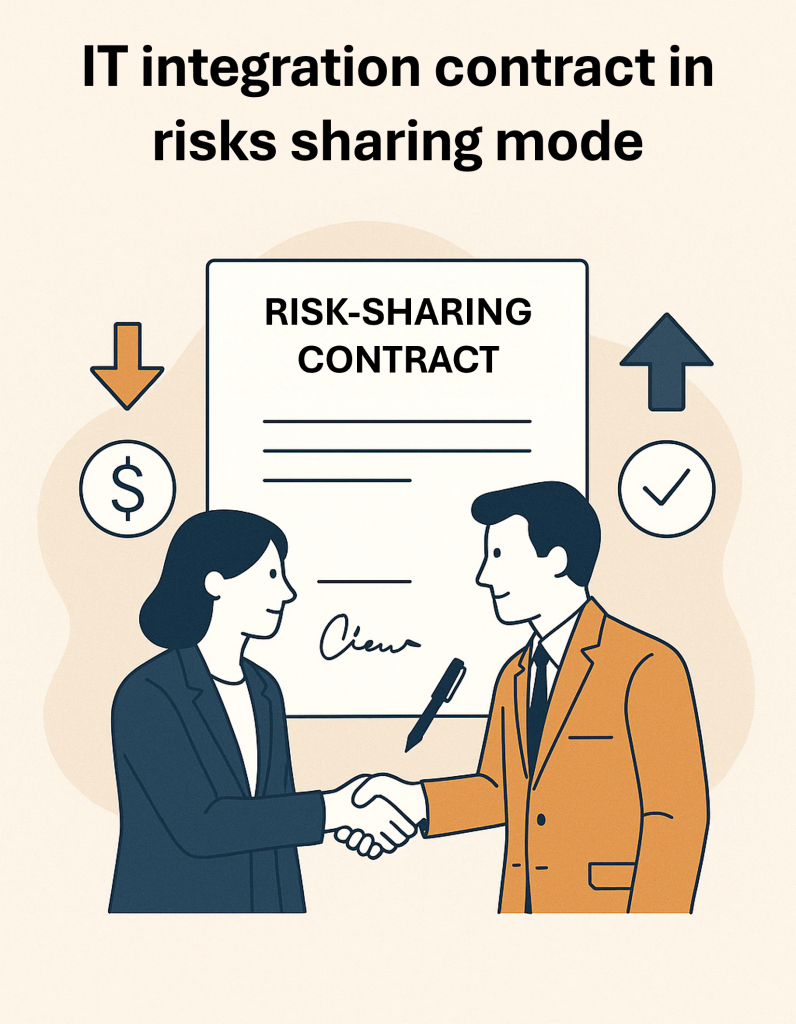IT Contracts: The Risk-Sharing Model — A Catalyst for Success

In the world of IT projects, we often hear about budgets being exceeded and deadlines missed. While these issues can stem from technological or execution-related factors, the very nature of the contract between the client and the integrator plays a critical — and often underestimated — role.
The purpose of a contract is to create strong alignment between both parties around a common goal: delivering a high-quality solution on time and within budget. However, several traditional contract models come with significant limitations:
Time and Materials: The client bears the entire financial risk. The integrator, whether consciously or not, is incentivized to extend the project. A client who lacks strict contract management may quickly see scope — and costs — spiral out of control.
Fixed Price: This model pits the parties against each other. The integrator will try to deliver as little as possible to maximize profits, while the client will seek the most for the least cost. This misalignment almost inevitably leads to tension and conflict.
Risk Sharing: A Win-Win Alignment of Interests
In my experience, the risk-sharing contract is by far the most effective approach to truly align the goals of both the client and the integrator over the course of the project.
Here’s how it works:
-
The project scope is clearly defined from the start.
-
All assumptions and responsibilities are thoroughly documented.
-
The integrator provides a solid estimate of their fees, which serves as the target amount.
-
A contingency range is established:
-
Overruns: the integrator is penalized.
-
Savings: the integrator is rewarded with a bonus.
-
In other words, the integrator shares in the risks… but also in the potential rewards.
This model fosters effective delivery in a climate of collaboration rather than confrontation.
Experience shows that projects governed by risk-sharing contracts achieve superior results — for both the client and the integrator.
Interested in learning more about how to implement a risk-sharing contract for your IT projects?
Feel free to contact me.

